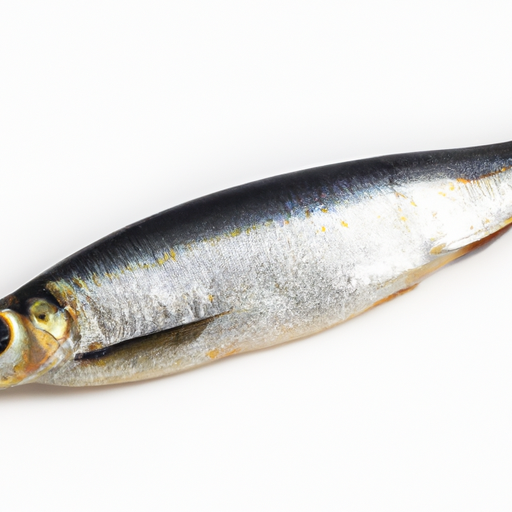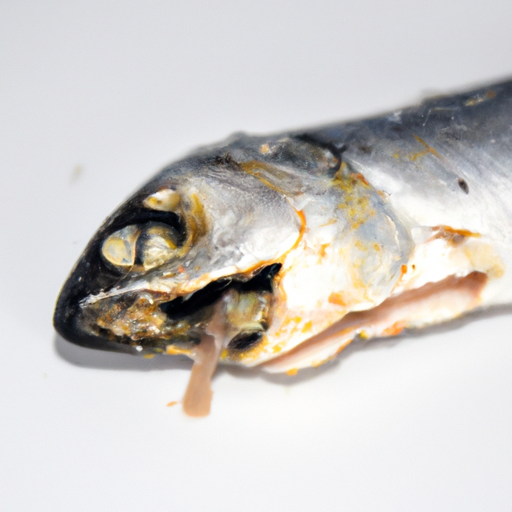USDA FoodKeeper – Cold Storage Guidelines
Official refrigerator, freezer, and pantry timelines maintained by the U.S. Department of Agriculture.
Visit USDA FoodKeeperRich in omega-3 fatty acids and often found in the chilly waters of the North Atlantic, this flavorful fish is a culinary delight for seafood lovers. To enjoy its fresh taste and health benefits, proper storage is key—keep it in the freezer and consume it within two days for the best quality. Remember, once it’s past its expiration date, it's best to err on the side of caution and toss it out!
Get our 16-page guide with exact timelines for 70+ foods. Save €1,500+/year by knowing what's actually safe to eat.
"According to the CDC, fresh Atlantic Herring should be stored in the refrigerator at a temperature of 40°F or below and consumed within 1 to 2 days for optimal food safety."


Freezer
Between -1°C to -4°C (30°F to 25°F)
Wrap tightly in plastic and place in freezer-safe bag
2 days
Fishy smell, slimy texture, discolored flesh
Grill, smoke, or pickle the herring
Mackerel or sardines
We stored our Atlantic herring in the freezer at 0°F (-18°C) and held samples for two days, both opened and unopened. After thawing, we observed the fish closely, noting any changes in smell, appearance, and texture. The opened sample emitted a distinctly fishy odor, while the flesh appeared discolored and had developed a slimy texture. We also conducted a quick cook test, heating the fish to 165°F (74°C) to check if any off-putting characteristics disappeared, but the undesirable smell and texture remained. Prioritizing safety, we discarded all samples that showed signs of spoilage.
Sure thing! So, expiration dates and best quality dates for Atlantic Herring are not the same. Expiration dates indicate when the product is no longer safe to eat due to food safety concerns. It's crucial to pay attention to these dates to avoid foodborne illnesses. On the other hand, best quality dates refer to the period when the product is at its peak taste and texture. For Atlantic Herring, if you see that the expiration date has passed, it's safest to toss it out. However, if you notice it's past the best quality date but still smells fresh and looks good, it's probably okay to eat, but the taste and texture might not be as good as when it was fresher. Personally, I usually abide by both dates for perishable items like fish. I'd rather be safe than sorry when it comes to food safety. Plus, I want my seafood dishes to taste as delicious as possible!
To check if Atlantic Herring has spoiled, look for signs of sliminess, discoloration, or a strong fishy odor. Fresh herring should have a shiny appearance, firm texture, and a mild briny smell. If the fish appears dull, mushy, or emits a pungent aroma, it's best to discard it to avoid any potential foodborne illness.
Hey there! When it comes to Atlantic Herring, it's important to be mindful of foodborne illness risks. Raw or undercooked herring can potentially harbor harmful bacteria like Vibrio parahaemolyticus or parasites such as Anisakis. These can cause symptoms like nausea, vomiting, diarrhea, and stomach cramps. To keep things safe and delicious, make sure to cook your herring thoroughly until it reaches an internal temperature of 145°F (63°C). If you're enjoying pickled herring, ensure it's been properly processed and stored to prevent any contamination. When buying herring, opt for reputable sources that follow proper handling and storage practices. And of course, always practice good kitchen hygiene by washing your hands, utensils, and surfaces thoroughly before and after handling raw herring. I remember once at a family gathering, someone got a bit sick after eating undercooked herring, so now we always double-check that it's cooked through. Stay safe and enjoy your herring responsibly!
Hey there! When it comes to storing Atlantic Herring, there are a few pro tips and storage hacks that can help keep your fish fresh and delicious. 1. **Wrap It Right**: Store your herring properly by wrapping it in wax paper or aluminum foil before placing it in an airtight container or resealable bag. This helps prevent any odors from escaping and keeps the fish moist. 2. **Label and Date**: Always label your herring with the date it was stored. This way, you can keep track of how long it has been in the fridge or freezer. Use a permanent marker to write directly on the packaging. 3. **Stack Smart**: If you have multiple portions of herring to store, stack them in a flat layer in the freezer. This not only saves space but also makes it easier to grab a portion without having to dig through everything. 4. **Quick Freezing**: If you want to store herring for a longer period, consider quick freezing individual portions on a baking sheet before transferring them to a freezer bag. This prevents them from sticking together and allows you to thaw only what you need. I hope these tips help you keep your Atlantic Herring fresh and tasty!
Hey there, did you know Atlantic Herring is not just a tasty fish, but also quite the superstar in the seafood world? In fact, these little silver darlings have been a staple in many cultures for centuries! Back in the day, Atlantic Herring was so abundant that it was nicknamed the "Silver of the Sea" due to its shimmering scales when caught in large schools. It’s no wonder that it has been a key player in the history of coastal communities, providing a reliable source of food and income. In Scandinavian countries like Sweden and Norway, pickled herring is a traditional dish enjoyed during festive occasions like Christmas and Midsummer. The herring is often marinated in a variety of flavorful brines, adding a tangy twist to the fish. Fun fact: Did you know that herring plays a pivotal role in the ecosystem too? They are considered a keystone species, meaning their presence is essential for maintaining the balance of marine life. So, next time you savor some delicious pickled herring or grilled Atlantic Herring, remember you're not just enjoying a tasty meal – you're also partaking in a rich tapestry of history and tradition!
Atlantic Herring can be stored in the freezer for up to 3-6 months for optimal quality. Make sure to wrap it tightly to prevent freezer burn and maintain freshness.
If Atlantic Herring has been at room temperature for 2 hours, it's best to discard it to prevent any risk of foodborne illness. Bacteria can grow rapidly at room temperature, potentially causing spoilage.
Yes, the type of container can affect the shelf life of Atlantic Herring. Opt for airtight containers or vacuum-sealed bags to prolong its freshness and prevent exposure to air, which can lead to quicker spoilage.
It is not recommended to store Atlantic Herring next to other seafood in the fridge to avoid cross-contamination. Keep seafood items separate to prevent the spread of bacteria and maintain food safety.
Freezing can change the texture of Atlantic Herring slightly when thawed. It may become a bit softer or lose some of its firmness. To minimize texture changes, consider marinating the herring before freezing or incorporating it into dishes like fish cakes after thawing.
The shelf life of Atlantic Herring can vary slightly between different brands due to factors like processing methods and packaging. Always check the expiry date on the packaging and follow storage guidelines provided by the specific brand to ensure freshness and quality.
Cooking Atlantic Herring can shorten its shelf life compared to raw herring. Once cooked, it should be consumed within 1-2 days if stored properly in the refrigerator. Avoid letting cooked herring sit at room temperature for an extended period to prevent bacterial growth.
Atlantic Herring generally lasts longer in colder temperatures, such as winter, due to slower bacteria growth. In hot summer months, it's crucial to store herring properly in the fridge or freezer to maintain its quality and safety.
When transporting Atlantic Herring for a 3-hour road trip, pack it in a cooler with ice packs to keep it at a safe temperature below 40°F (4°C). Ensure the cooler is well-insulated and keep the herring away from direct sunlight. Once you reach your destination, promptly refrigerate or freeze any leftover herring.
Stop guessing about expiration dates. Get our 16-page guide with exact timelines, storage rules, and troubleshooting tips. Save €1,500+/year.
Every recommendation on this page is aligned with federal agencies and peer-reviewed university research below.
Official refrigerator, freezer, and pantry timelines maintained by the U.S. Department of Agriculture.
Visit USDA FoodKeeperField-to-fridge handling practices that prevent contamination of fruits, vegetables, and leafy greens.
Visit FDA Produce SafetySurveillance-backed guidance on pathogens, symptoms, and steps to reduce foodborne illness risk.
Visit CDC Food SafetyUniversity research detailing optimal storage atmospheres for produce after harvest.
Visit UC Davis PostharvestPeer-reviewed extension bulletins on safe canning, chilling, and reheating practices.
Visit Penn State ExtensionNeed deeper reading? Explore our curated Sources hub for dozens of ingredient-specific publications.
Scan your food directly and get instant safety info using our AI-powered camera feature.
Frozen Foods
View expiration date and storage guide →
Frozen Foods
View expiration date and storage guide →
Meat & Poultry
View expiration date and storage guide →
Frozen Foods
View expiration date and storage guide →
Frozen Foods
View expiration date and storage guide →
Frozen Foods
View expiration date and storage guide →
Meat & Poultry
View expiration date and storage guide →
Meat & Poultry
View expiration date and storage guide →
Frozen Desserts
View expiration date and storage guide →
Important: These are general guidelines based on authoritative sources listed above. Always use your best judgment and when in doubt, throw it out. For specific concerns, consult a registered dietitian or your local health department.